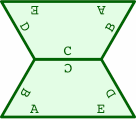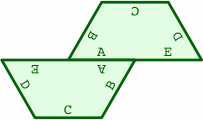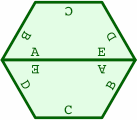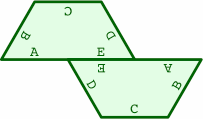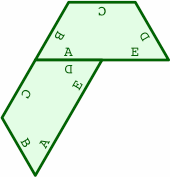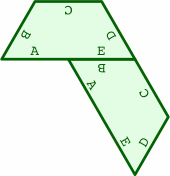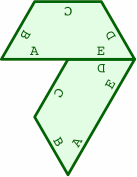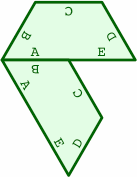Home.
These following are the fifteen canonical juxtapositions of two trapezoidal tables of the design explained on the main page. Each trap has five abutment zones, which are the two ends, the short side, and the two halves of the long side. A juxtaposition is canonical when an abutment zone of one table lies squarely against an abutment zone of another table. In these diagrams each abutment zone is lettered for reference.
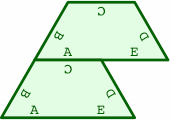
| 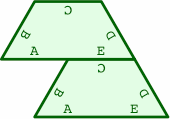
|
| A-C | C-E
|
|---|
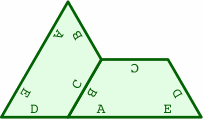
| 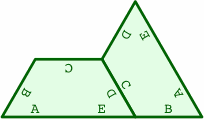
|
| B-C | C-D
|
|---|
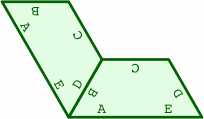
|
| B-D
|
|---|
With more than two tables, the quanity of canonical juxtapositions grows astronomically. However, there is a notation that aids an orderly search of the possibilities.
Consider three tables numbered 1, 2 and 3. Suppose zone A of table 1 abuts zone D of table two, symbolized 1A-2D. Then juxtaposition 3C-1E entails juxtaposition 3B-2E. On the other hand, juxtaposition 3A-1E will not work because table 2 is in the way.

